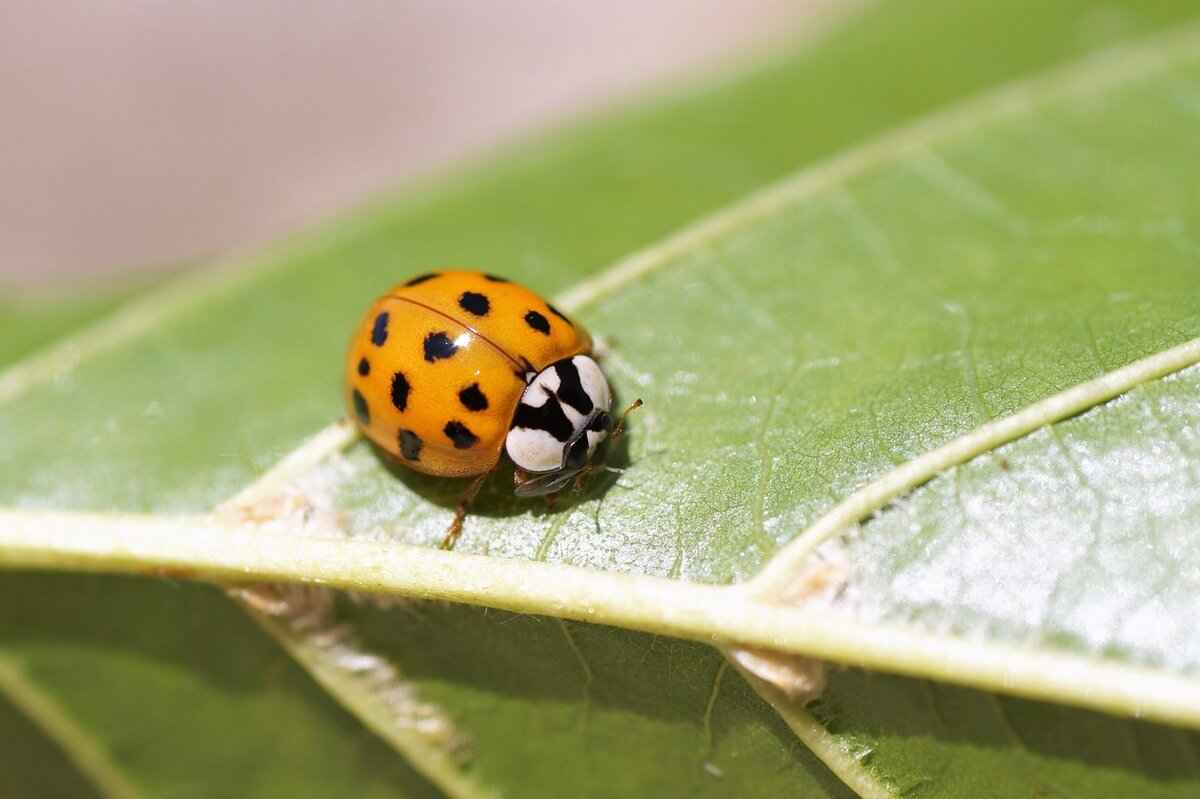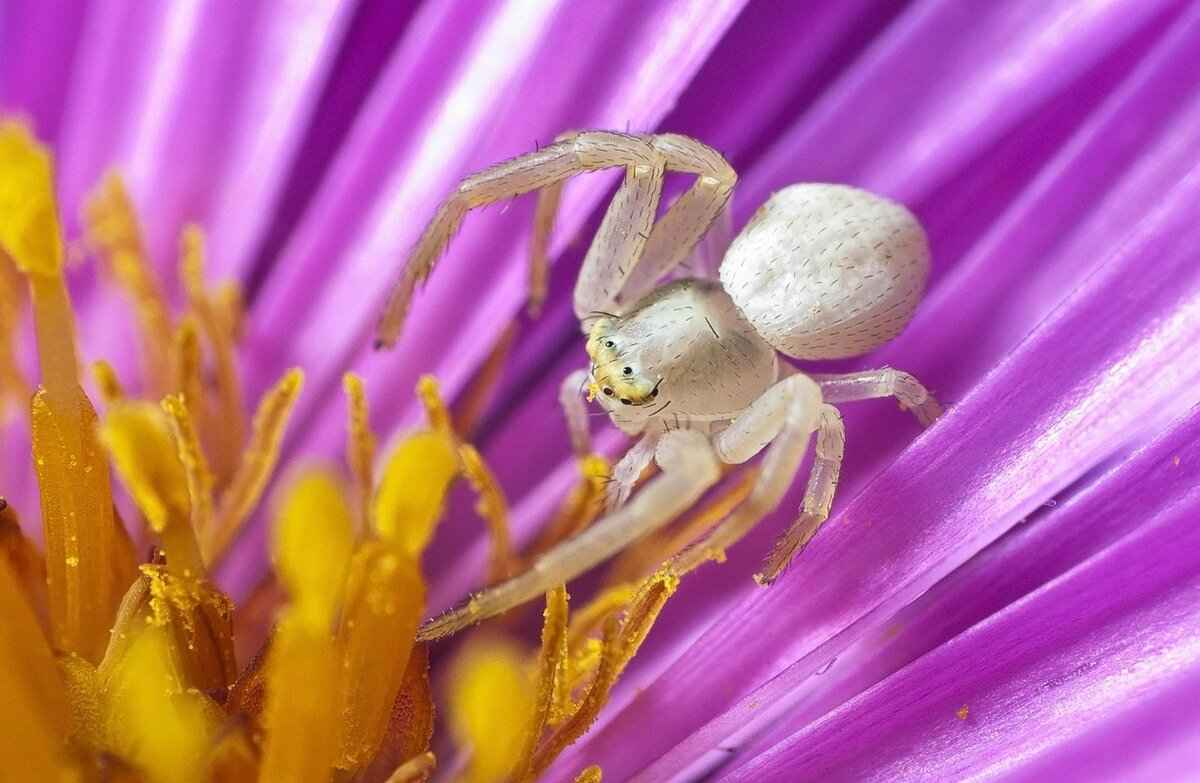The consumption of insects, also known as entomophagy, is gaining traction in Asia as a sustainable protein source. This article delves into the various aspects of this growing trend, including its nutritional benefits, cultural significance, environmental impact, and the challenges faced by the industry.
Insects are packed with essential nutrients. They are an excellent source of protein, containing up to 80% protein by dry weight, which is significantly higher than traditional livestock. In addition, they are rich in vitamins such as B12 and minerals like iron and zinc. Incorporating insects into diets can lead to improved overall health and help combat malnutrition, particularly in developing regions.
The rising global population demands innovative solutions to food scarcity. Insect farming is a resource-efficient alternative to conventional livestock. It requires significantly less land, water, and feed. For instance, producing one kilogram of protein from crickets requires only 1.7 kg of feed, whereas cattle require up to 8 kg. This efficiency can play a crucial role in addressing food security while minimizing environmental degradation.
Insect farming is considered one of the most eco-friendly forms of agriculture. It emits fewer greenhouse gases compared to traditional animal husbandry. For example, crickets produce 80% less methane than cattle. Additionally, insects convert feed into protein more efficiently, resulting in less waste. This section explores the ecological advantages of rearing insects as a sustainable alternative.
Insect farming requires minimal space, making it suitable for urban agriculture. This spatial efficiency can help reduce deforestation and land degradation. By utilizing vertical farming techniques, insect farms can be established in urban areas, providing fresh protein sources close to consumers and reducing transportation emissions.
Certain insect species can thrive on organic waste, thereby contributing to waste reduction. For example, black soldier fly larvae can effectively convert food scraps into valuable protein. This section discusses how insect farming can serve as a solution for organic waste management, turning waste into a resource.
In many Asian cultures, insects are not only consumed but are also regarded as delicacies. Countries like Thailand and Vietnam have a long history of incorporating insects into their diets. This section explores the cultural significance of entomophagy, examining how traditional practices influence modern consumption trends and acceptance.
Despite its potential, the insect farming industry encounters several challenges. Regulatory hurdles, consumer acceptance, and scaling production to meet demand are significant barriers. This section addresses these challenges, providing insights into the complexities of growing this industry.
The regulatory landscape for edible insects varies significantly across regions, affecting food safety and consumer trust. In some countries, regulations are still in their infancy, leading to uncertainty among producers and consumers alike. This analysis highlights the implications of these regulations on the industry’s growth and the importance of establishing clear guidelines.
Consumer perceptions and misconceptions about eating insects can hinder acceptance. Many people view insects as unappealing or associate them with filth. Strategies to promote insect consumption include education campaigns and marketing efforts that emphasize the health benefits and sustainability of insects as a protein source.
In conclusion, the trend of eating insects in Asia presents a promising solution to several global challenges, including food security and environmental sustainability. As awareness grows, the potential for this industry to thrive becomes increasingly apparent.

What Are the Nutritional Benefits of Eating Insects?
In recent years, the consumption of insects, also known as entomophagy, has gained traction as a viable alternative protein source. This is particularly notable in many parts of Asia, where insects have been part of traditional diets for centuries. Understanding the nutritional benefits of eating insects is crucial for those considering incorporating them into their diets.
Insects are incredibly nutrient-dense, offering a rich profile of proteins, vitamins, and minerals. For instance, crickets contain about 60-70% protein by dry weight, making them an excellent source of high-quality protein comparable to traditional livestock like beef and chicken. Additionally, insects provide essential amino acids, which are vital for muscle repair and growth.
- Vitamins: Many insects are rich in vitamins such as B12, which is crucial for nerve function and blood formation. For example, mealworms are known to be high in riboflavin and niacin.
- Minerals: Insects also offer a good source of minerals like iron, zinc, and magnesium. Grasshoppers, for instance, are particularly noted for their high iron content, which can help combat anemia.
- Healthy Fats: Certain insects, such as waxworms, contain healthy fats, including omega-3 and omega-6 fatty acids, which are beneficial for heart health.
In comparison to traditional livestock, insects are not only nutritionally superior in some aspects but also more sustainable. They require significantly less land and water to produce, making them an environmentally friendly source of protein.
When comparing the nutritional profile of insects to that of traditional livestock, several key differences emerge:
| Component | Insects (e.g., crickets) | Beef | Chicken |
|---|---|---|---|
| Protein Content | 60-70% | 26% | 25% |
| Fat Content | 10-30% | 20% | 10% |
| Iron | 3.5 mg/100g | 2.6 mg/100g | 1.3 mg/100g |
| Vitamin B12 | 1.5 µg/100g | 2.4 µg/100g | 0.3 µg/100g |
This table illustrates that insects can provide higher amounts of protein and essential nutrients compared to conventional meats, making them a superior choice in some dietary contexts.
Incorporating insects into diets can offer numerous health benefits:
- Improved Digestive Health: Insects are a source of chitin, a form of dietary fiber that may promote gut health.
- Weight Management: High protein and low-fat content can aid in weight control by promoting satiety.
- Boosted Immune Function: The vitamins and minerals found in insects can help strengthen the immune system.
Overall, the nutritional profile of insects, combined with their environmental benefits, positions them as a promising alternative protein source. As more people become aware of these advantages, the acceptance of insects in diets is likely to grow, paving the way for a more sustainable future.

How Do Insects Contribute to Sustainable Food Systems?
In recent years, the focus on sustainable food systems has intensified, leading to innovative solutions that address both food scarcity and environmental concerns. One such solution is insect farming, which has emerged as a viable alternative to traditional livestock farming. This approach not only conserves resources but also offers numerous benefits that can significantly contribute to a more sustainable food future.
Insect farming requires significantly less land, water, and feed compared to conventional livestock. This efficiency is crucial as the global population continues to rise, leading to increased demand for food. Insects can be raised in small spaces, making them ideal for urban farming initiatives. By utilizing vertical farming techniques, insect producers can maximize output while minimizing their ecological footprint.
- Land Efficiency: Insects require only a fraction of the land that cattle or pigs need. For instance, raising crickets can produce the same amount of protein as beef while using 80% less land.
- Water Conservation: The water footprint of insects is significantly lower than that of traditional livestock. Crickets, for example, need just 1 liter of water to produce 1 kilogram of protein, compared to 15,000 liters for beef.
- Feed Conversion Ratio: Insects have a high feed conversion ratio, meaning they convert feed into protein more efficiently. This results in less feed being required to produce the same amount of protein.
Moreover, insects can thrive on organic waste, such as food scraps and agricultural by-products. This characteristic not only helps in managing waste but also reduces the overall environmental impact associated with waste disposal. By turning waste into a valuable protein source, insect farming can play a pivotal role in achieving a circular economy.
Insect farming is not only resource-efficient but also eco-friendly. The greenhouse gas emissions from insect farming are significantly lower than those from traditional livestock farming. Insects produce minimal methane and ammonia, which are major contributors to climate change. This reduction in emissions makes insect farming a more sustainable option as the world grapples with climate-related issues.
| Aspect | Insect Farming | Traditional Livestock |
|---|---|---|
| Land Use | Low | High |
| Water Use | Very Low | Very High |
| Greenhouse Gas Emissions | Minimal | High |
Furthermore, the ability to farm insects in urban settings can lead to reduced transportation emissions, as food can be produced closer to where it is consumed. This localization of food production not only supports community resilience but also enhances food security.
In conclusion, the integration of insect farming into our food systems presents a transformative opportunity to address pressing global challenges. By leveraging the advantages of insect farming, we can work towards a more sustainable, resource-efficient, and environmentally friendly food production model. As awareness and acceptance of entomophagy grow, the potential for insects to play a significant role in global food systems becomes increasingly evident.
What Makes Insect Farming Eco-Friendly?
In recent years, the conversation surrounding sustainable agriculture has gained momentum, and one of the most promising solutions is insect farming. This innovative approach offers a multitude of ecological benefits when compared to traditional animal husbandry. In this section, we will explore the various ways in which insect farming is eco-friendly, focusing on its lower greenhouse gas emissions, reduced waste production, and overall environmental impact.
Insect farming is known for its significantly lower greenhouse gas emissions compared to conventional livestock farming. For instance, raising cattle produces substantial amounts of methane, a potent greenhouse gas. In contrast, insects emit minimal amounts of greenhouse gases during their life cycle. This is largely due to their efficient conversion of feed into body mass, which is notably higher than that of traditional livestock. On average, insects require less than one-tenth of the feed to produce the same amount of protein as cattle, which translates to a smaller carbon footprint.
Another ecological advantage of insect farming is its ability to produce less waste. Traditional livestock farming generates large quantities of manure, which can lead to pollution and require extensive management practices. Insect farming, however, utilizes organic waste as feed, turning potential waste into valuable protein. For example, black soldier fly larvae can thrive on food scraps, effectively reducing the volume of organic waste that would otherwise end up in landfills. This process not only minimizes waste but also contributes to a more circular economy.
Insect farming can also enhance biodiversity by promoting the cultivation of various insect species. Unlike monoculture practices common in traditional agriculture, insect farming encourages the rearing of multiple species, which can help maintain ecological balance. Furthermore, the integration of insects into existing agricultural systems can support pollination and pest control, leading to healthier ecosystems.
By reducing greenhouse gas emissions and waste production, insect farming presents a viable strategy for combating climate change. As the global population continues to grow, the demand for protein sources will increase, placing further strain on our planet’s resources. Insects offer a sustainable alternative that requires fewer natural resources and produces fewer environmental pollutants. By shifting towards insect protein, we can significantly lessen our ecological footprint.
Insect farming is also remarkably space-efficient. Unlike traditional livestock, which requires vast amounts of land for grazing and feed production, insects can be raised in compact environments, including urban settings. This adaptability allows for the potential to utilize existing infrastructure, thereby reducing the need for deforestation and habitat destruction. As cities expand, integrating insect farming could provide a sustainable solution to food production without encroaching on natural ecosystems.
Insect farming aligns with several of the United Nations’ Sustainable Development Goals (SDGs), particularly those related to food security, sustainable agriculture, and responsible consumption. By promoting the use of insects as a protein source, we can help alleviate hunger and malnutrition while simultaneously addressing environmental concerns. The low resource requirements of insect farming make it an attractive option for developing nations, where food scarcity and environmental degradation are pressing issues.
In conclusion, insect farming presents a multitude of ecological advantages that can significantly contribute to a more sustainable food system. From reducing greenhouse gas emissions and waste production to enhancing biodiversity and supporting sustainable development, the benefits are clear. As we continue to seek solutions to the challenges posed by traditional agriculture, insect farming stands out as a promising alternative that deserves further exploration and support.
How Does Insect Farming Reduce Land Use?
In the quest for sustainable food production, the question of land use efficiency has become increasingly important. As urban populations continue to grow, the need for innovative agricultural practices that minimize land consumption is more critical than ever. Insect farming emerges as a viable solution, offering numerous advantages in terms of spatial efficiency.
One of the most significant benefits of insect agriculture is its ability to thrive in limited spaces. Unlike traditional livestock farming, which requires vast tracts of land for grazing and feed production, insect farming can be conducted in compact environments such as urban settings, warehouses, and even vertical farms. This spatial efficiency allows for the production of high-quality protein without the extensive land degradation associated with conventional agriculture.
Why is Space Efficiency Important?
- Urban Farming Opportunities: Insect farming can be integrated into urban environments, transforming unused spaces like rooftops and basements into productive farming sites.
- Reduced Deforestation: By requiring less land, insect farming helps mitigate the pressure on forests, thereby preserving biodiversity and ecosystems.
- Resource Optimization: Insects convert feed into protein more efficiently than traditional livestock, requiring significantly less land to produce the same amount of protein.
Insects such as crickets, mealworms, and black soldier flies can be cultivated in controlled environments, allowing for year-round production. This adaptability not only maximizes land use but also minimizes the environmental impact typically associated with conventional farming methods.
How Do Insects Contribute to Land Conservation?
Insect farming contributes to land conservation in several ways:
- Minimal Land Footprint: A small area can yield substantial protein output, with estimates suggesting that producing one kilogram of crickets requires only 1.7 square meters of land.
- Lower Feed Requirements: Insects require significantly less feed compared to cattle or pigs, which often necessitate large pastures for grazing. This efficiency reduces the overall land needed for feed crop cultivation.
- Integration with Waste Management: Many insects can thrive on organic waste, effectively converting it into protein while simultaneously reducing the need for additional land to grow feed crops.
Furthermore, the compact nature of insect farming allows it to be integrated into existing agricultural systems, enhancing overall productivity without the need for expanding farmland. This integration is vital as it helps maintain the balance between food production and environmental conservation.
What Are the Challenges of Implementing Insect Farming?
Despite its advantages, the widespread adoption of insect farming faces certain challenges. These include:
- Consumer Acceptance: Many individuals remain unfamiliar with entomophagy, leading to hesitance in embracing insects as a food source.
- Regulatory Barriers: Inconsistent regulations across regions can hinder the growth of the insect farming industry, affecting market access and consumer trust.
- Infrastructure Needs: Developing the necessary infrastructure for insect farming in urban areas requires investment and innovation.
In conclusion, the role of insect farming in reducing land use is both significant and promising. As urban areas continue to expand, embracing this sustainable form of agriculture could be key in addressing the pressing challenges of food security and environmental conservation.
Can Insects Help in Waste Management?
In a world increasingly burdened by waste, the search for effective solutions is more urgent than ever. Insect farming has emerged as a promising approach to managing organic waste, transforming what was once seen as a problem into a valuable resource. This section delves into how certain insects can thrive on organic waste, contributing significantly to waste reduction and promoting sustainability.
Many insects, such as black soldier flies, are particularly adept at consuming organic waste. These insects can process a wide variety of materials, including food scraps, agricultural byproducts, and even manure. By converting these waste products into protein-rich larvae, insect farming not only helps in waste management but also creates a sustainable source of animal feed and fertilizer. This dual benefit highlights the potential of insects as a solution to two pressing issues: waste disposal and food production.
One of the key advantages of using insects for waste management is their efficiency. For instance, black soldier fly larvae can reduce the volume of organic waste by up to 80% within a short period. This rapid decomposition process not only minimizes the amount of waste sent to landfills but also mitigates the associated greenhouse gas emissions. By diverting organic waste from landfills, we can significantly reduce methane emissions, a potent greenhouse gas that contributes to climate change.
In addition to their waste-reducing capabilities, insects also contribute to the circular economy. The larvae produced from organic waste can be harvested and processed into high-quality protein for livestock, aquaculture, and even human consumption. This creates a closed-loop system where waste is continuously recycled, reducing the need for synthetic fertilizers and enhancing soil health.
Furthermore, insect farming can be implemented on a small scale, making it accessible to urban areas and communities with limited space. This adaptability allows for localized waste management solutions, reducing transportation costs and carbon footprints associated with waste disposal. Urban insect farms can transform waste generated in cities into valuable protein sources, promoting sustainability and enhancing food security.
However, while the potential for insect farming in waste management is significant, there are challenges that need to be addressed. Public perception often poses a barrier, as many people are unfamiliar with the concept of consuming insects or may have misconceptions about their safety and nutritional value. Educational initiatives and outreach programs are essential to inform the public about the benefits of insect consumption and to normalize their use in food systems.
Moreover, regulatory frameworks governing insect farming need to be established or updated to ensure food safety and consumer trust. Clear guidelines can help foster the growth of this industry, encouraging more farmers to adopt insect farming practices as a viable waste management solution.
In conclusion, insect farming presents a multifaceted solution to organic waste management. By effectively converting waste into valuable protein sources, insects play a crucial role in promoting sustainability and reducing environmental impact. As we continue to explore innovative ways to address waste challenges, the integration of insect farming into our waste management strategies could pave the way for a more sustainable future.
What Are the Cultural Perspectives on Eating Insects?
In many Asian cultures, entomophagy, or the practice of eating insects, is not only a common dietary choice but also a reflection of rich cultural traditions. Insects are viewed as delicacies in various regions, showcasing the diverse culinary practices that have evolved over centuries. This article delves into the cultural significance of insect consumption across different Asian societies and highlights how these practices are intertwined with local customs and beliefs.
In countries like Thailand, China, and Vietnam, insects are a staple in local markets and restaurants. For instance, in Thailand, fried crickets and bamboo worms are popular snacks, often seasoned with spices and herbs. These dishes are not just food items; they are part of the cultural identity and heritage. In China, insects such as silkworms and locusts are consumed in various forms, from stir-fries to soups, showcasing the culinary versatility of these protein sources.
Insects are often associated with traditional festivals and rituals. For example, in some regions of India, locusts are collected and consumed during harvest festivals, symbolizing abundance and prosperity. This practice not only highlights the nutritional value of insects but also reinforces community bonds as families gather to prepare and share these dishes.
Despite the long-standing tradition of eating insects, modern perceptions vary widely. In urban areas, where Western dietary norms dominate, insects may be viewed with skepticism. However, there is a growing movement advocating for the inclusion of insects in modern diets, driven by their sustainability and health benefits. Educational campaigns and culinary innovations are helping to reshape perceptions, making insects more acceptable to younger generations.
Insects are not only a cultural delicacy but also a nutritional powerhouse. They are rich in protein, vitamins, and essential minerals, often surpassing traditional meat sources in nutritional content. Economically, insect farming presents a viable alternative to conventional livestock, requiring less land and resources. This aspect is particularly appealing in regions facing food scarcity and economic challenges, as it provides a sustainable source of nutrition while promoting local entrepreneurship.
To promote the acceptance of insect consumption, it is essential to address cultural stigmas and misconceptions. Engaging culinary experts and influencers to create appealing insect-based dishes can help bridge the gap between tradition and modernity. Additionally, educational initiatives that highlight the environmental and health benefits of insects can foster a more positive outlook towards entomophagy.
In conclusion, the cultural perspectives on eating insects in Asia are deeply rooted in tradition, community practices, and evolving societal norms. As the world shifts towards more sustainable food sources, the rich heritage of entomophagy offers valuable insights into how we can embrace alternative protein sources while respecting cultural diversity.

What Challenges Does the Insect Farming Industry Face?
The insect farming industry, despite its **immense potential** as a sustainable protein source, faces a myriad of challenges that could impede its growth and acceptance. This section delves into the regulatory hurdles, consumer acceptance issues, and the complexities of scaling production to meet increasing demand.
Regulatory frameworks surrounding edible insects vary significantly across different regions. These regulations are crucial for ensuring food safety and consumer protection. In many countries, edible insects are not clearly defined under existing food safety laws, leading to confusion among producers and consumers alike. This lack of clarity can hinder the industry’s growth, as potential investors may be reluctant to enter a market fraught with uncertainty.
Moreover, the approval process for new insect species intended for human consumption can be lengthy and costly. Compliance with health and safety standards is essential, but it often requires extensive research and documentation, which can be a barrier for small-scale farmers. As a result, many entrepreneurs may find it challenging to navigate these regulations, limiting the overall growth of the industry.
Consumer perception plays a critical role in the success of the insect farming industry. Many individuals still view insects as unappealing or even repulsive, largely due to cultural biases and misconceptions. This negative perception can significantly hinder market growth.
To combat these challenges, it is essential to implement effective educational campaigns that highlight the nutritional benefits and environmental advantages of consuming insects. Engaging with the public through cooking demonstrations, tastings, and informative workshops can help demystify insects as a food source. Furthermore, partnering with influential chefs and food bloggers can create a positive buzz around insect-based products, fostering greater acceptance among consumers.
As demand for insect protein rises, scaling production to meet this demand presents its own set of challenges. One of the primary issues is the availability of suitable feed for insect farming. Insects require specific diets to thrive, and sourcing these feeds sustainably can be difficult. Additionally, maintaining optimal breeding conditions and managing biosecurity are critical factors that can affect production levels.
Moreover, the technology used in insect farming is still evolving. Many farms rely on traditional methods, which may not be sufficient for large-scale operations. Investing in innovative farming techniques and automation is essential for increasing efficiency and productivity. However, these advancements often require significant capital investment, which can be a barrier for many new entrants in the market.
To address these multifaceted challenges, collaboration among stakeholders is key. Government bodies, research institutions, and private enterprises must work together to develop clear regulatory guidelines that facilitate industry growth. Additionally, investment in research and development can lead to improved farming practices, better feed options, and enhanced production technologies.
Furthermore, fostering a culture of acceptance through education and community engagement will be vital in shifting public perceptions about insect consumption. By highlighting the sustainability and nutritional benefits, the industry can pave the way for a more inclusive acceptance of insects as a viable food source.
In conclusion, while the insect farming industry faces significant challenges, proactive strategies aimed at addressing regulatory issues, enhancing consumer acceptance, and scaling production can help unlock its full potential as a sustainable protein source.
How Do Regulations Impact Insect Consumption?
The consumption of edible insects is gaining momentum worldwide, particularly in Asia, where cultural practices and environmental considerations are driving interest. However, the regulatory frameworks surrounding food safety for edible insects differ significantly across regions, impacting both the industry’s growth and consumer trust.
In many countries, the regulation of edible insects is still evolving. For instance, in the European Union, insects are classified under the Novel Food Regulation, which mandates rigorous safety assessments before they can be marketed. In contrast, countries like Thailand have more lenient regulations, allowing for a quicker entry into the market. This disparity can create challenges for businesses looking to expand internationally.
Regulatory frameworks can either facilitate or hinder the growth of the insect farming industry. Strict regulations often lead to increased costs for producers, as they must invest in compliance and safety measures. This can slow down the rate of innovation and expansion. Conversely, more supportive regulations can encourage investment and research, fostering a more robust market. For example, countries that provide clear guidelines and support for insect farming have seen a surge in startups and innovation in product development.
Consumer trust is crucial for the acceptance of edible insects. Regulations that ensure safety and transparency can enhance consumer confidence. When consumers are assured that the insects they consume meet safety standards, they are more likely to embrace them as a viable food source. In regions where regulations are perceived as inadequate, skepticism can arise, leading to reluctance in trying insect-based products.
Cultural attitudes towards insect consumption significantly influence regulatory frameworks. In cultures where insects are a traditional food source, regulations may be more permissive, reflecting a broader acceptance. For instance, in countries like Mexico and parts of Southeast Asia, insects are not only consumed but celebrated, leading to a regulatory environment that supports their use. In contrast, in Western countries, where entomophagy is less common, regulations tend to be stricter, often requiring extensive studies to validate safety.
Harmonizing regulations around edible insects poses several challenges. Different countries have varying standards for food safety, which can complicate international trade. For example, a product approved in one country may face hurdles in another due to differing safety assessments. This lack of uniformity can stifle market growth and limit consumer access to diverse insect products.
To address these challenges, stakeholders, including industry leaders and policymakers, are advocating for a more unified approach to regulations. Initiatives aimed at sharing research and best practices can help establish common standards that ensure safety while promoting industry growth. Furthermore, engaging with consumers to educate them about the benefits and safety of edible insects can foster a more accepting environment.
In conclusion, the regulatory landscape for edible insects is complex and varies greatly by region. Understanding these regulations is essential for industry stakeholders aiming to navigate the challenges of growth and consumer acceptance. By fostering a regulatory environment that prioritizes safety while encouraging innovation, the edible insect industry can thrive and contribute to sustainable food systems.
What Are the Barriers to Consumer Acceptance?
The consumption of insects, while gaining traction globally, faces significant barriers to acceptance among consumers. Understanding these barriers is essential for fostering a shift towards insect-based diets. This section delves into the common misconceptions and perceptions that hinder acceptance and outlines effective strategies to promote insect consumption.
One of the primary reasons for consumer hesitation is the cultural stigma associated with eating insects. In many Western societies, insects are often viewed as pests rather than food sources. This perception can be attributed to a lack of familiarity and exposure to entomophagy, leading to a strong psychological barrier. Additionally, the visual appeal of insects can deter potential consumers; many people find the idea of eating insects unappetizing due to their appearance.
- Hygiene Concerns: Many consumers worry about the cleanliness and safety of insects as food. Misconceptions about insects being carriers of diseases can lead to fear and resistance.
- Nutritional Myths: There is a common belief that insects do not provide adequate nutrition compared to traditional protein sources. This is far from the truth, as many insects are rich in protein, vitamins, and minerals.
- Environmental Impact Misunderstandings: Some consumers are unaware of the significant environmental benefits of insect farming, such as lower greenhouse gas emissions and reduced land use.
Education plays a crucial role in changing consumer perceptions. By providing accurate information about the nutritional benefits of insects, their environmental advantages, and safety standards in insect farming, we can dispel myths and misconceptions. Workshops, cooking classes, and tasting events can help consumers experience the flavors and textures of insect-based dishes, making them more open to incorporating insects into their diets.
Effective marketing strategies can significantly influence consumer acceptance of insect consumption. By highlighting the sustainability and health benefits of insects, brands can create a positive narrative around entomophagy. Engaging social media campaigns that feature testimonials and recipes can also help to normalize insect consumption and make it more appealing to a broader audience.
In cultures where insects are traditionally consumed, promoting local delicacies can enhance acceptance. Collaborating with chefs and food influencers to create innovative insect-based dishes can showcase the culinary potential of insects, thereby encouraging more people to try them. Additionally, integrating insects into familiar recipes can lower the barriers for hesitant consumers.
As the demand for sustainable protein sources grows, addressing the barriers to insect consumption will be critical. Continued research and development in the insect farming industry will not only improve production methods but also enhance the appeal of insects as food. By focusing on education, marketing, and cultural integration, we can pave the way for a future where insects are widely accepted as a valuable food source.
Frequently Asked Questions
- Are insects a good source of protein?
Absolutely! Insects are packed with protein, often containing more than traditional livestock. They also provide essential vitamins and minerals, making them a nutritious addition to your diet.
- How do insects help the environment?
Insects require significantly less land, water, and feed than conventional livestock, making them a sustainable option. They also emit fewer greenhouse gases, which can help combat climate change.
- What cultural significance do insects hold in Asia?
In many Asian cultures, insects are not just food; they are considered delicacies. Consuming insects, or entomophagy, is deeply rooted in tradition and is often celebrated during festivals.
- What challenges does the insect farming industry face?
The industry deals with regulatory challenges, consumer skepticism, and the need to scale production. Overcoming these hurdles is essential for wider acceptance and growth.
- How can I get over my fear of eating insects?
Start by trying products that incorporate insects in a familiar form, like protein bars or snacks. Educating yourself about their benefits can also help shift your perspective!














